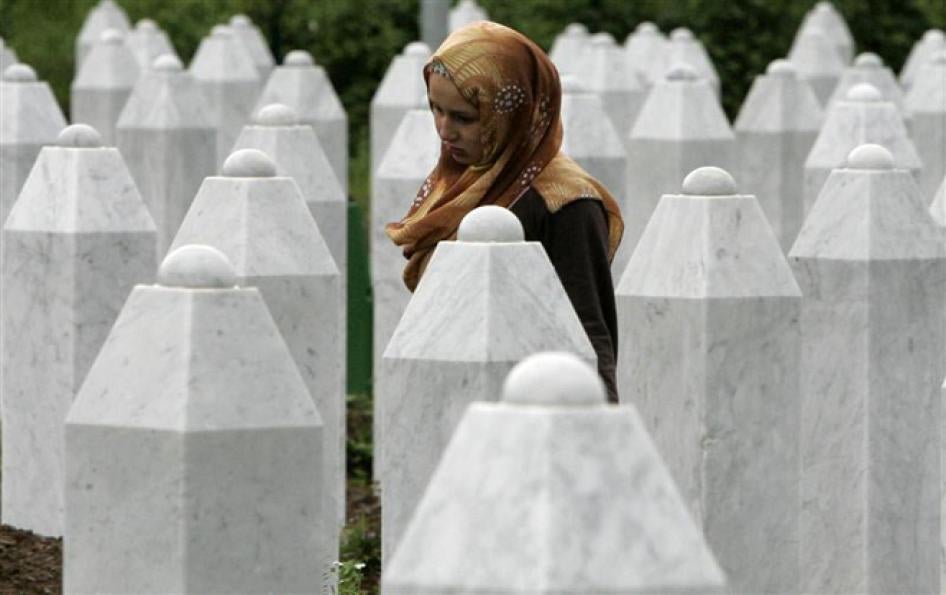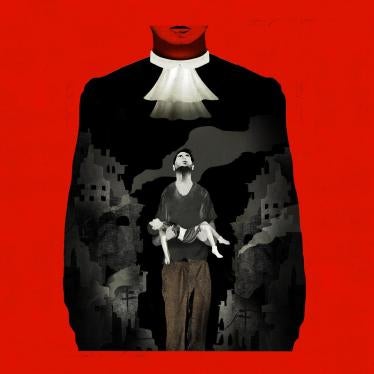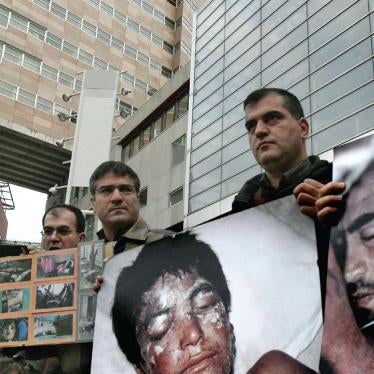The rolling hills around Srebrenica seemed lovely that spring, 15 years ago-verdant, wooded, peaceful-save for the ugly flowering of protruding corpses in the green fields. The bodies offered proof that while flesh rots away quickly and cleanly, mass-produced jeans, T-shirts and jackets stand up well to the elements-not just visible, but almost wearable, nine months after the massacre.
The local Bosnian Serbs saw it differently. "Nothing happened here," one woman outside the school told me. "That's where the children play." And play they did.
Those scattered bodies were proof, to journalists exploiting the calm of a NATO-enforced truce over an area still controlled by Bosnian Serb troops, that Srebrenica really had suffered the greatest massacre in post-war Europe: the slaughter in July 1995 of more than 7,000 boys and men at the hands of soldiers under General Ratko Mladic's command.
Thursday's news of Mladic's arrest sparked a flood of memories from the war in Bosnia. I remember the Srebrenica survivors in nearby Tuzla, almost all women, weeping, begging for news, clutching at improbable stories that their husbands and sons, fathers and brothers, had been spirited to Serbia to work in secret mines.
No one could believe they were really all dead. Not, that is, until we found ourselves treading gingerly over a mass grave: we saw, half-buried in the clotted earth, bones and clothing and eyeglasses and strips of pale pink cloth used to bind the victims' eyes.
I remember villagers watching as we walked out of a school gym marked with dried-blood spatters and spent bullets, where we found a bolt of pale pink cloth, source of the blindfolds. Survivors said Mladic addressed perhaps 1,500 people packed into that gym, and told them they were off to a work camp. Instead they were loaded on to trucks, driven down a country lane to the gravesite and shot.
I think it was Mladic's boast of military professionalism that made Srebrenica so especially hideous. He boasted of being a soldier, disciplined, careful. Once his men had overrun the Srebrenica "safe area," he invited the Dutch U.N. commander to share a toast, soldier to soldier. His unarmed enemies were dispatched with great efficiency and no pity, bused to killing sites all over the region, or hunted down-as with those bodies on the hillsides.
Indicted for genocide, war crimes and crimes against humanity, Mladic and his civilian boss, Radovan Karadzic, still managed to elude NATO forces for years-not so surprising, given the lukewarm efforts to detain them and Serbia's protective shield.
At last he is now in custody, in handcuffs, and soon will be in court, forced to face his victims and to confront what his soldiers did to so many thousands, before, during and after Srebrenica. Karadzic is already on trial in The Hague.
Belgrade did the right thing in arresting Mladic, but it has not been easy. Public opinion has long favored shielding him from the reach of international justice. Pressure by the European Union, and especially the Dutch government—waving the carrot of eventual EU membership—has been instrumental in pushing Serbia toward this moment. Without it, both men undoubtedly would still be free.
Today marks an important day for victims of the Bosnian war. But it is also an important day for victims of the worst crimes known to humankind around the world. Mladic’s arrest sends a clear message that justice never forgets. Omar al-Bashir and Muammar Gaddafi should take note: the world just got a lot smaller.
Emma Daly, communications director at Human Rights Watch, was The Independent’s Bosnia correspondent from 1994 to 1996.








